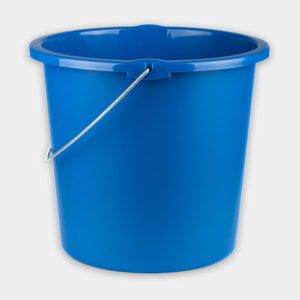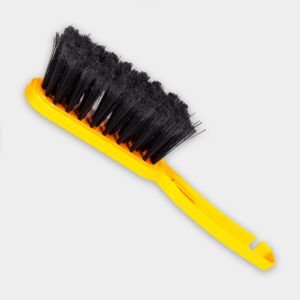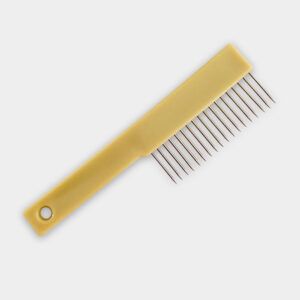We may be compensated if you purchase through links on our website. Our team is committed to delivering honest, objective, and independent reviews on home products and services.
Project details
Skill
Cost
Estimated Time
You’ve accidentally let your paintbrush harden overnight—don’t worry, we’ve all been there. Fortunately, you don’t need to run to the nearest hardware store to buy a new one. You can restore your brush with the right techniques and materials. This guide will walk you through the process of cleaning dried paintbrushes so you can continue to use them for future do-it-yourself (DIY) projects. In the video above, expert painter Mauro Henrique shows Kevin O’Connor how to bring an old paintbrush back to life using a chemical brush cleaner.
The Importance of Paintbrush Care
Paintbrushes aren’t usually a one-and-done deal. If you care for them properly, high-quality paintbrushes can last years. When paint dries on a brush, it can impact its performance. Here are a few signs your brush needs a cleaning:
- The bristles become stiff and lose their flexibility.
- Paint buildup affects the brush’s ability to hold and distribute paint evenly.
- The shape of the brush is distorted, making precise application difficult.
To avoid the hassle of cleaning dried paintbrushes, always clean them immediately after use. Hang them or stand them on their handles when you aren’t using them, and use brush covers or wrap bristles in plastic when taking breaks during a project.
Materials Needed To Clean Dried Paintbrushes
Before you begin the cleaning process, gather the following materials:
- 2-inch x 4-inch x 2-foot lumber scrap
- Chemical brush cleaner
- Clean water
- Paintbrush comb
- Rubber gloves
- Soft-bristled brush
- Two small paint buckets
Step-by-Step Guide to Cleaning Dried Paintbrushes
Follow these steps to clean your dried paintbrushes:
- Put on rubber gloves to protect your hands from the chemical cleaner.
- Place the dried brush in an empty, clean paint bucket. If the bucket has a magnet, position the ferrule (the metal part) of the brush against it to hold it in place.
- Pour the brush cleaner into the bucket, filling it to just above the height of the dried paint on the brush.
- Allow the brush to soak in the cleaner for 20 to 30 minutes.
- After soaking, use a soft-bristled brush to gently loosen and remove the paint. Brush from the ferrule toward the tip of the brush.
- Continue brushing until all chunks of paint are loose. If necessary, soak the brush again.
- Once the paint is removed, rinse the brush with clean water in a separate bucket. Use the 2-inch by 4-inch scrap as a work surface in the bucket to brush against as you rinse.
- Continue rinsing until the water running from the paintbrush is clear.
- Spin the brush handle between your palms to remove excess water, with the tip inside the rim of the bucket.
- Use a paintbrush comb to straighten the bristles and prepare the brush for its next use.
For the best results when cleaning your dried paintbrushes, always brush in the direction of the bristles, away from the ferrule. Be patient and gentle to avoid damaging the bristles, and use room-temperature or lukewarm water for rinsing.
Alternative Methods To Clean Dried Paintbrushes
While chemical brush cleaners are effective, there are other methods you can try.
Vinegar Method
Vinegar can be an eco-friendly alternative for cleaning dried paintbrushes. Start by heating white vinegar in a pot on the stove until it’s warm but not boiling. Dip the paintbrush in the warm vinegar for about 20 minutes, then use a wire brush or old comb to remove loosened paint. Rinse thoroughly with warm water and dish soap.
Fabric Softener Technique
Fabric softener can help soften dried paint. Mix equal parts fabric softener and warm water in a bucket. Soak the brush for about an hour, then rinse with clean water and work out the paint with your fingers or a brush comb.
Specialized Cleaning Products
You can achieve impressive results by using specialty paintbrush cleaning solutions available at most home improvement stores. These products are specifically designed to break down both oil- and water-based paints. For the best outcome, follow the manufacturer’s instructions on the label.
Preserving Brushes During Short Painting Breaks
If you need to take a short break during a painting project, place the brush inside a plastic bag. Squeeze all the air out of the bag and seal it tightly. If you’re using a grocery bag, use painter’s tape to seal the opening. This method works for breaks of a few hours but isn’t suitable for overnight storage.
Proper Paintbrush Storage
After your project is finished and you’ve cleaned your brushes, hang them vertically with the bristles pointing down. Store them in a cool, dry place away from direct sunlight. You can use brush covers to protect the bristles from dust and maintain their shape.
When To Replace Your Paintbrush
Despite your best efforts, sometimes a brush is beyond saving. Consider replacing your brush if the bristles remain bent or misshapen after cleaning or if there’s significant bristle loss. You should also replace the brush if the ferrule is loose or damaged or if the brush no longer applies paint evenly.



